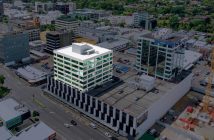The latest Hamilton Occupancy Survey completed jointly between NAI Harcourts and CBRE Research shows the impact that Covid-19 has had to December 2020. The impact across the Industrial and CBD office sectors highlights the Hamilton resilience.
Industrial
Monitored industrial building stock measures 1.9 million square metres, with stock increasing during 2020 by in excess of 30,000 sqm. In addition, 19 projects were under construction at the time of the survey (December 2020), which will increase total stock by 70,000 sqm when completed.
During the 12 months to December 2020, industrial vacancy has increased only slightly, to 1.3 percent. As a result of intensive industrial land development in the Waikato region over the past few years, occupiers have had choice: Te Rapa, Northgate at Horotiu, Hamilton Airport, Ruakura or Hautapu (Cambridge). However there has been significant take-up of land by both owner-occupiers and developers – as a result there has been a large reduction in industrial land capacity, signalling more new builds to come. Improving transportation networks and strong economic performance of the ‘golden triangle’ of Auckland, Hamilton and Tauranga continues to keep focus on this region. To put this into context, Christchurch industrial vacancy now sits at 4.0 percent, Wellington at 4.6 percent and Auckland at 1.5 percent. Despite Covid, the Hamilton industrial market experienced strong developer and occupier activity, coming out the other side relatively unscathed. The healthy supply pipeline, especially in Te Rapa North and Titanium Park, together with larger speculative developments, are testaments to developer confidence, underpinned by the above average economic performance of the Waikato region where GDP growth was 1.9 percent in 2020 compared to the national average of 1.6 percent.
Office
Monitored CBD office stock measures 261,000 sqm with A and B Grade now making up 31 percent of total stock, up from 15 percent 10 years ago. Grade D and E Now sits at 33 percent of total stock, down from 47 percent 10 years go. This transition is continuing to have a significant impact on the desirability and therefore growing levels of occupancy in Grades A and B.
Hamilton in the 6 months to December 2020 saw overall vacancy rise by only 0.7 percent, from 7.5 percent to 8.2 percent.
The CBD has three of the most significant developments it has seen in the last 20 years, which at completion will add close to 50,000 sqm to the CBD office stock. This includes:
- AFI Development’s Union Square.
- Stark Property’s Tristram Precinct.
- Tainui Group Holdings’ ACC building.
The Covid environment impacts on future work patterns are yet to fully arise in the Hamilton office market. The availability of quality sub-lease space that has been seen in Auckland, Wellington, and Christchurch has not been as apparent in Hamilton to date. In the Covid context the occupier mix in Hamilton is supportive of a stable office leasing market. As a comparison, Christchurch prime now sits at 8.3 percent, Wellington at 6.6 percent (Prime at 1.2 percent and secondary at 9 percent), with Auckland sitting at 12 percent (up by nearly 5 percent in the six months to December 2020).
Why do I believe retail has been so resilient in the Hamilton CBD? We are not reliant on large numbers of government and large corporate occupiers, as is the case in central Wellington and Auckland. Those were the tenants that remained working from home for much longer and were slower to respond to getting back into the office and supporting local businesses.

For a full copy of the latest Hamilton Industrial and Hamilton CBD Office Occupancy Surveys:
Industrial: https://lnkd.in/g3NYcmh
Office: https://lnkd.in/g77uwqN






